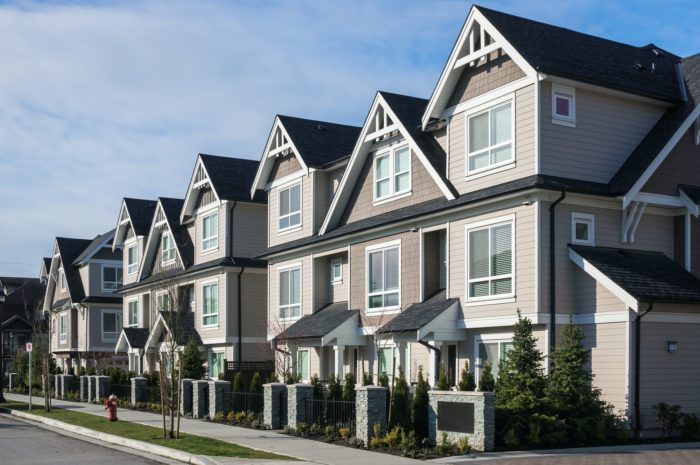Where to Insulate
Learn the best ways to effectively insulate your home or business
Where to Install Insulation
As heating and cooling costs increase, so does interest in making buildings more energy-efficient. From specific commercial challenges like effective metal building insulation to new construction or renovation of older homes, insulation is key to ensuring peak energy efficiency.
Batt insulation and blown-in insulation are the most popular insulation choices for homes, while radiant barrier systems are common in metal building insulation. When selected and installed properly, insulation can be a cost-effective way to achieve lower utility bills.
Important Home Insulation Installation Areas
You can improve your home’s energy efficiency through insulation and air sealing. You may need to combine several insulation solutions, depending on your home’s age, design, and specifics. There are five main locations inside a home where you should insulate: the attic, walls, floors, crawl spaces, and the basement. You might also consider insulating your garage.
Attic
Whether you live in a warm or cold weather climate, the attic is the most important place to insulate your home. Because heat rises, heat can be lost through a poorly insulated attic. Attic insulation also reduces cooling loss in the summer. Insulation resists the transfer of heat, so the same insulation that keeps your heat inside in the winter keeps the heat outside in the summer. The attic is a space where you can install the highest R-value insulations. You can insulate your attic with batt, blown-in, or spray foam insulation.
Walls and Floors
Wall insulation is one of the best ways to reduce noise from carrying through your house and one of the least expensive ways to make your home energy efficient. Spray foam insulation is a popular choice because it can be sprayed into walls and hard-to-reach spaces.
Many homeowners neglect to properly insulate lower-level floors. As much as 15% of the heat in a room can be lost through uninsulated floors. Floors over unheated areas such as an unconditioned garage should be insulated. Insulation installation contractors can install batt, blown-in, or spray foam insulation beneath your floors.
Crawlspaces and Basements
Insulation in a crawl space adds to the overall comfort and energy efficiency of a home. Batt, blown-in, and spray foam insulation are all good choices for crawl spaces. Insulation in your crawl space keeps outside air from coming into your home. This, in turn, helps prevent your HVAC system from overworking and can help save you money.
Similarly, a properly insulated basement can save you money and provide you with a comfortable living space. If you have an unfinished basement, you can install insulation along the foundation. Common options for basement insulation include batt or spray foam insulation. Radiant insulation can also be added to exposed pipes and an insulation blanket can be installed around your water heater to boost your home’s energy efficiency.
Garage Insulation
The type and amount of recommended insulation for a garage depends largely on how the garage is used and if the garage is attached to the house. Insulating a garage may not be necessary, especially for detached garages.
Insulating Unfinished Interior Garage Walls
It’s easy to install insulation in garage walls that are not yet covered with drywall. Most garages are framed with two-by-fours that are 16” center-to-center. This is the perfect size for installing 15″ wide R13 fiberglass batt insulation. Because garage heights vary considerably, appropriate lengths of insulation will have to be cut from rolls.
Before the insulation installation takes place, seal any gaps in the walls to stop air leaks. This is especially important along interior walls to keep garage smells from creeping into living areas. Insulation can also be used to help slow the spread of fire from the garage to the house.
Insulating Finished Interior Garage Walls
If your garage walls are already finished and you want to add additional fiberglass batt insulation in rolled form, you may have to remove some drywall. Alternatively, a professional insulation installer can cut a series of holes in the drywall and install blown-in fiberglass or cellulose. After the insulation is in place, drywall patching can be used to fill in the holes.
Where to Install Metal Building Insulation
Insulation is also an essential component in commercial buildings. Metal buildings provide a specific challenge, as metal can be highly heat conductive.
Radiant Barriers for Rooftops
Radiant barrier insulation reflects heat, making it an important part of metal building insulation systems. Radiant insulation is usually very thin, comes in large rolls, and is easy to handle. Reflective sheeting blocks downward heat flow in places like metal rooftops, where direct sunlight can disrupt central control. Insulation experts may also recommend adding a layer of radiant insulation to your metal walls.
Spray Foam Insulation for Walls
Batt, blown-in, and spray foam insulation can also be installed in metal buildings. Spray foam is similar to blown-in insulation but is prepared as a liquid or foam that rapidly fills gaps, cracks, and hard-to-reach crevices. Whether it’s reflective insulation for a rooftop, batting for big walls, or blown-in insulation for irregular areas, choosing the right insulation makes a world of difference to the efficiency of metal buildings.
Insulation Contractors Near You
Every building is different, so it’s always best to get a professional opinion when it comes to insulating homes and commercial structures. TruTeam is the nation’s leading insulation installer. All of our insulation contractors are background checked, licensed, and insured. We are committed to making sure that your insulation project is completed on time, on budget, and to your specifications. TruTeam local experts are available to provide free estimates; contact us today!
Featured Articles
Insulation Removal | Assured Insulating
Radiant Barrier | Assured Insulating
Categories
The Team You Can Trust
Get Free Quote



Installers
